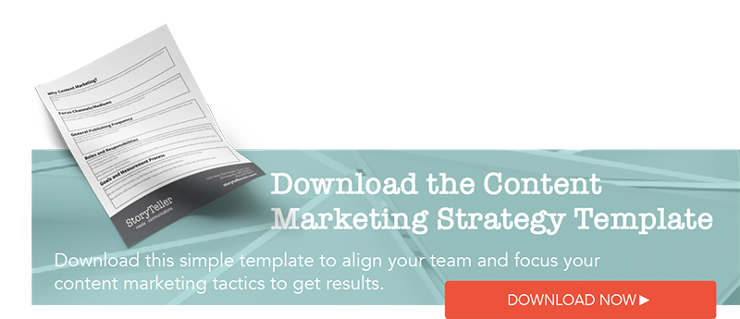Content calendar problems fall into two categories: either there’s not enough content or too much. Some businesses start blogs, only to abandon them weeks later when blog posts get deprioritized and eventually forgotten altogether. Other businesses inundate users with tons of content on random things submitted from throughout the organization. Anytime the boss has a good idea, it immediately goes on the blog. And nobody reads it or cares.
The best way to solve either of these problems? Creating and managing a content calendar. Here’s how.
Step One: Ask Yourself Some Tough Questions
The first step to creating your calendar is conducting a searching, fearless, honest and thorough assessment of your business and your content goals. You must be able to answer these questions.
- What is the goal of the blog (or other content) you’re creating? You must be able to articulate a goal for your content. Otherwise, it is likely to become a random assortment of ineffective words. Do you want to engage current customers by keeping them updated on business events? Do you want to educate potential customers so that your leads are better-qualified? Know the meaning of it all.
- Who do you need to read – and care – about what you’re writing? This is the most important question and the one that most businesses fail to answer properly. The entire point of creating a content calendar is to fill it with awesome topics that people will care about. But you can’t know what somebody cares about until you know them. So, get to know your customers. Then create a profile of a perfect customer (a “persona”). When you pick content topics, pick them for that one person.
- What resources already exist? Look at what you’ve put up on your website. Know what pages are read most commonly and which ones are hardly glanced at. Know which pages users spend a long time reading. Look for opportunities, like a long, complex post that can be a source of inspiration for shorter, clearer topical posts. Or a topic that you know your customers ask about frequently, but that doesn’t appear on your site at all.
- What resources do you have to commit to new content? You must be realistic when creating a content calendar for your business – especially when you’re doing all the work yourself and not bringing in the pros. Creating quality content is more work than people realize. (That’s why many blogs end up with few or no posts.) So, what’s realistic for you? Commit to only what you can manage, whether that’s once a week or once a month.
Step Two: Bring Out the Excel Spreadsheet
Like all the best parties, the editorial calendar really gets going when the Excel spreadsheet comes out. (Just kidding.) But, I find that a spreadsheet is the most convenient way to establish a calendar. Create columns for these key pieces of information:
- Dates you plan to post content: From a business perspective, many people find it easiest to post on certain days (like Tuesday and Thursday, for example). Think of the user. Which days are the most likely to be interested in your content? Post then. If you don’t know, post and test. When do most people read your blog? How does the timing of a post affect how many readers it gets?
- Key events: Business events, holidays and special circumstances are important to consider when planning content. For example, if National Frozen Foods Day (March 6! Woot!) is relevant to your business, note it. You might want to consider posting timely content that’s relevant to the day around that time.
- Keywords: Keyword research and its role in blog-post topic development could be the source of hundreds of blog posts, dozens of hot debates and a fist fight. If you’re using tools like Hubspot or Moz Pro Keyword Explorer to do keyword research, create a column or two for your keywords and the data behind them.
- Topics and/or titles: Some people prefer separate columns for general topics and official titles. Otherwise, creating one title column is fine since users should be able to discern the topic of the post from the title. When picking titles, do your research and think of the user. What words do your customers use? What information is already out there? What’s interesting? What’s relevant?
- Authors: Who is writing the post? Note it on the spreadsheet so that you don’t forget to remind your author well in advance.
- Other dates: When is the blog post draft due to you? What day will you stop by Bob’s cubicle and cajole and threaten him into actually writing the post? Create a schedule.
- Next-level shit: Blogs can be tremendously effective when the calendar is a simple and well-thought-out list of blog topics that are written and posted on schedule. However, the pros often take it to the next level by making the content calendar part of an overarching content strategy involving tons of factors – the stage of the sales funnel or the buyer’s journey, multiple personas, linking strategies, placement and wording of various calls to action, testing A/B variants, images and the list goes on. It’s your spreadsheet. Make it as complex as you’d like. The world is your oyster.
Step Three: Commit and Follow Through
This step is the trickiest for many businesses. Once you’ve created your spreadsheet, you can’t just stick it away in a file folder and forget about it. You must execute on your plans. The best way to do this depends on your unique business dynamics, but communication is key. Everyone needs to know about the plan. They must know exactly how they are expected to contribute, especially if you are depending on them to help create content.
Follow-through is also critical. So is follow-up. Leverage your shared office calendar or task management system. Set deadlines for content, allowing plenty of time for missed deadlines, edits and reviews. Don’t underestimate the time it takes to properly format and post a blog. Work ahead as much as possible.
Review the performance of existing posts on a regular schedule and revise accordingly. Don’t be afraid to change plans. The important thing is this: You’ve created a calendar – a real plan for creating meaningful content. Keep going. Keep improving. Don’t give up.

![]() Mitchel Sinon
:
Feb 17, 2017 5:44:45 PM
Mitchel Sinon
:
Feb 17, 2017 5:44:45 PM



